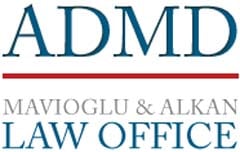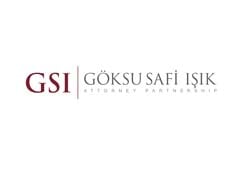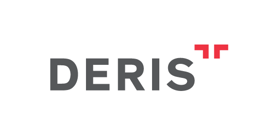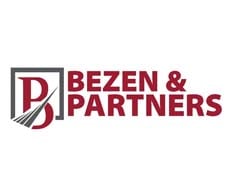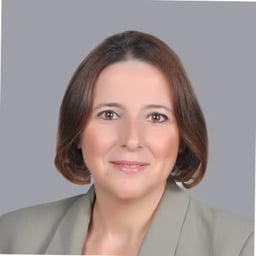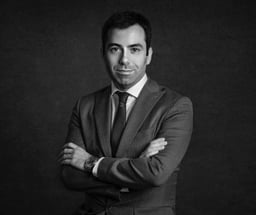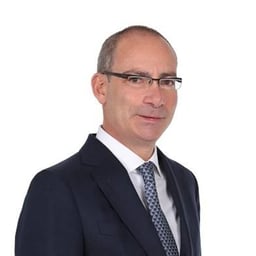Law of Obligations - Consumer Law
The Appearance Of The Liability Of Intermediary Service Providers Enabling Electronic Commerce For Defective Goods Under Different Legal Systems
Authors: Serdarhan Güler
New developments are occurring with the gradual prevalence of e-commerce platforms and becoming an inseparable part of life with the pandemic. In proportion to capaciousness of these developments and the number and sequence of the advertisements made by companies the interest of consumers in e-commerce is growing rapidly. In this context, the use of e-commerce sites is expanding, not only for household goods, garments, cosmetics; but also for kitchen shopping. This intense interest of consumers has led to the formation of tech giants such as Amazon and E-bay internationally and important technology companies such as Trendyol, Çiçeksepeti, Hepsiburada, Getir in our country. Likewise, it is possible to see from the report[1] published by the Ministry of Trade that the ratio of e-commerce to general trade was 17.6% in the first six months of 2021.
In this context, features of the economy are changing considerably, and we, as lawyers and legislators, have the obligation to develop rules and research the subject in accordance with the new shopping order. In the Official Gazette dated January 25, 2022, an appeal in favor of the law decision made by the 3rd Civil Chamber of the Court of Cassation, dated November 15, 2021 and numbered 2021/4000 E., 2021/11403 K., regarding the liability of intermediary service providers that enable electronic commerce due to defective goods was published. We also believe that it would be useful to examine this issue in the context of comparative law, and we hope that the information note titled "The Appearance of the Liability of Intermediary Service Providers Enabling Electronic Commerce Due to Defective Goods Under Different Legal Systems" will be useful to those concerned. First of all, it will be seen when looking at the decision of the 3rd Civil Chamber of the Court of Cassation numbered 2021/4000E. that the defendant (the Consumer) applied to the consumer arbitration committee with the demand for refund of the fee arising from the delivery of defective goods against ÇiçekSepeti (the Claimant) and the demand was accepted, but ÇiçekSepeti demanded the annulment of the transaction, arguing that it had no hostility with the defendant because it was not a supplier. The Local Court dismissed the case on the grounds that the claimant was responsible for the defective goods, that the recourse relationship with the supplier company was an internal relationship, and that the consumer was justified in relying on the ÇiçekSepeti brand. Pursuant to Law No. 6502, the Ministry of Justice demanded the appeal in favor of the law on the grounds that the seller, the producer and the importer are jointly liable for defective goods and holding the service provider, who is not one of them, responsible would be contrary to the procedure and the law. By the Court of Cassation; it has been stated that the Claimant Company, which enables e-commerce on the Internet network, is in the position of intermediary service provider and according to the preliminary information form of the distance sales contract between the parties, the seller party is stated as "Duman Pastry Shop", by Article 9 of the Law No. 6563 on the Regulation of Electronic Commerce and Article 6 of the Regulation on Service Providers and Intermediary Service Providers in Electronic Commerce, it has been stated that the lawsuit should be accepted since the Claimant is not obliged to investigate the content provided and the judgment has been appealed in favor of the law."
When the judgment of the Court of Cassation above and legal regulations are investigated, it is possible to say the intermediary service providers are not liable for the defective goods delivered in e-commerce under Turkish law. However when the actions of service providers that organize such large advertising campaigns, make commitments about the reliability of the system, advertise in this direction, and provide incentives for the purchase of the products offered on their platform are examined, it is seen that these advertisements and trust play a major role in the purchases made by consumers. Considering their financial power, it is concluded that by some people believe that it would be fairer that the intermediary service providers to be held responsible. Although the reaction to new cases and situations is slow in countries with a Civil law legal system such as Turkey, in countries with an Anglo-Saxon legal system such as the United States of America, disputes are analyzed "case by case", which increases the speed with which the law keeps pace with new developments. Furthermore, the European Union's most fundamental regulation regulating liability, the "’The Product Liability Directive (85/374/EEC)", was inspired by the decisions of judges in the United States, which were enforced for many years and became established case law. In this scope, we are going to examine first the judgments given regarding this matter in the USA.
In light of the above information, in the case of ‘’Oberdorf v. Amazon[2]’’ decided by the United States Court of Appeals, briefly; a dog collar purchased by the consumer from a third-party seller is broken because of the sudden movement of the dog, and a part of the collar caused a serious, major and permanent damage by striking the left eye of the consumer, afterwards the consumer sued Amazon.
Amazon, on the other hand, argued that websites provide a platform where two parties can come together and facilitate transactions, and therefore the company cannot be held liable for this damage.However, the Court stated that holding Amazon liable would stimulate Amazon to investigate the third-party sellers and ensure safety, as Amazon has significant control over third-party sellers and can remove unsafe products from its website altogether. In this context, noting that Amazon's contract with the third party included a clause on compensation that Amazon could recourse the compensation to be paid accordingly, and that Amazon could arrange a risk-based commission with third-party sellers, it was decided that Amazon is a seller and therefore subject to Pennsylvania's strict liability regime.
In the case of ‘’Bolger v. Amazon.com,LLC[3]’’ which is another case, the Complaint Angela Bolger, purchased a backup laptop battery sold by Lenoga from an online shopping website operated by, the Defendant Amazon; the Complaint alleged that Amazon was strictly liable for the defect in the batteries. The Supreme Court recognized the Complaint as right and decided that Amazon should be held liable, considering that Amazon is between the seller who is a third party and the buyer in this transaction and gives confidence to the Consumer and that Amazon can reserve its right of recourse through commercial agreements and thus can easily avoid damages.
Although Amazon has been held liable for the decisions above, there have also been decisions[4] in the United States to the contrary and this issue is still up to date and continues to be debated.
It wouldn’t seem possible to make a clear determination when the liability of online platform operators under the European Union Law is analyzed. However, there is no binding regulation directly on this issue in the EU Law yet. On the other hand, it is understood that Article 16 of the Discussion Draft Directive on Online Intermediary Platforms[5] prepared by the Digital Services Law Research Group and Article 20 of the Model Rules for Online Platforms ("ELI Model Rules")[6] prepared by the European Law Institute (the "ELI Model Rules") have already examined this issue.[7]
First, when the Discussion Draft Directive on Online Intermediary Platforms is analyzed, according to the proposal, it would be said that an online platform operator, that prominently presents itself as an intermediary to customers and suppliers would not be liable for the supplier's failure not to perform its obligation properly under customer contracts. However, according to the proposal, the platform operator may be liable for damages arising from misleading information provided on the platform if the platform operator is informed about content that contains false information but fails to take appropriate precautions to remove or correct such content. Furthermore, if the Consumer reasonably relied on the predominant influence of the online platform on the supplier, it is possible to say that the platform administrator may be jointly liable under this Directive.Assuming the implementation of Article 20 of the ELI Model Rules, if the Customer reasonably relies on the platform operator having a dominant influence on the supplier, then the platform operator may be held liable for non-performance/defective performance of the contract between the supplier and the Customer. It can be said that this rule proposal is similar to the conditions ensured in the Oberdorf Case.[8]
CONCLUSION:
As a result, neither in Europe nor in the USA is there yet any clear precedent on the extent to which intermediary service providers are liable for defective performance or non-performance of goods ordered through their platforms, and if there is such liability, whether strict liability provisions or fault-based liability provisions should be applied in terms of this liability. When it is considered that e-commerce growing every year and is going to expand, it is possible to say that these debates are going to continue in the following years and the countries are going to develop new precedents and regulations on this issue. In this direction, these precedents and regulations are going to be decisive in terms of determining whether the protection of consumers or the protection of intermediary platforms will be emphasized. However, in terms of Turkish law, we would like to state that in the current situation, intermediary service providers are not liable for defective goods. While this issue continues to be discussed worldwide, we will continue to follow and share with you the developments on the subject.
[1]https://www.eticaret.gov.tr/dnnqthgzvawtdxraybsaacxtymawm/content/FileManager/Dosyalar/ETI%CC%87CARET%20B%C3%9CLTEN%C4%B0%202021%20%C4%B0lk%206%20ay.pdf.
[2] Heather R. Oberdorf and Michael A. Oberdorf v. Amazon.com, Inc., No. 18-1041 (03.07.2019)
[3] Bolger v. Amazon.com, LLC., Super. Ct. No. 37-2017-00003009-CU-PL-CTL (13.08.2020)
[4] Tomás Gabriel García-Micó, Platform Economy and Product Liability: Old Rules for New Markets, IDP Iss. 35, 2021 , s. 8
[5] Bknz. Busch, Dannemann, Schulte-Nölke, Wiewiórowska-Domagalska and Zoll (2016). Discussion Draft of a Directive on Online Intermediary Platforms.
[6] Bknz. European Law Institute (2019). Model Rules on Online Platforms.
[7] European Parliamentary Research Service, Liability of online platforms, Brüksel, 2021, s. 67-68.
[8] Tomás Gabriel García-Micó, Platform Economy and Product Liability: Old Rules for New Markets, IDP Iss. 35, 2021, s. 18.
Ürey Law Office - December 17 2025






















